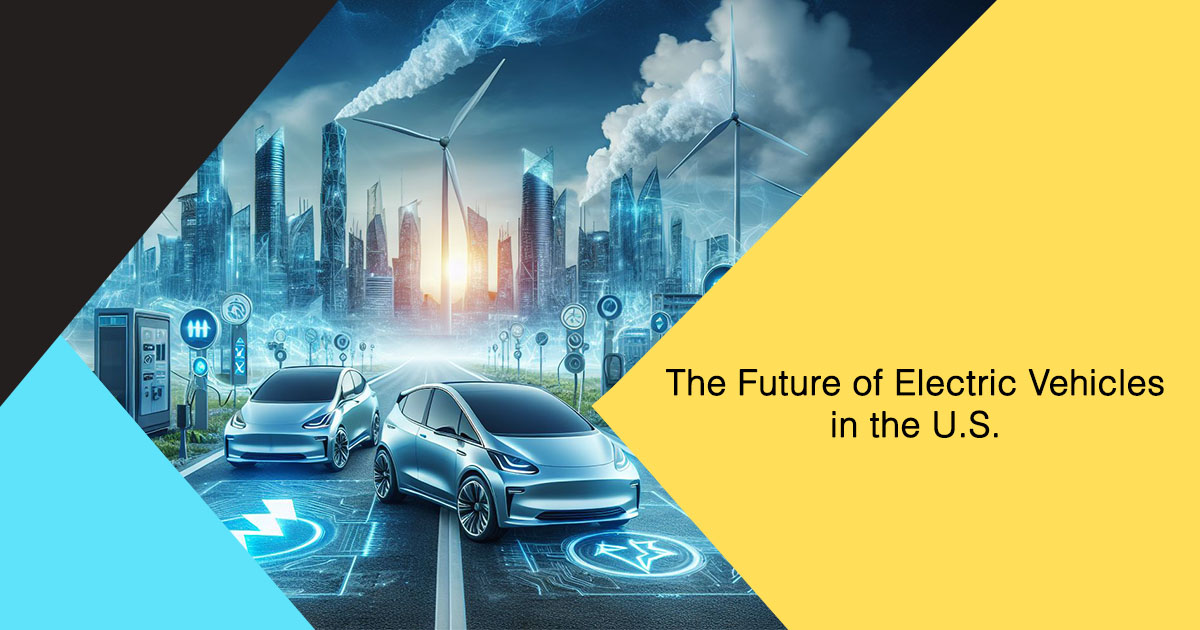The Future of Electric Vehicles in the U.S.

The future of electric vehicles (EVs) in the U.S. is promising, driven by advancements in technology, government support, and a growing consumer interest in sustainable transportation. As EV adoption accelerates, the U.S. automotive landscape is undergoing a profound transformation. Here’s a look at the key factors shaping the future of EVs in the U.S.:
1. Government Policies and Incentives
- Federal Support: The Inflation Reduction Act (IRA) includes tax credits for EV purchases, incentives for domestic battery production, and funding for charging infrastructure.
- State Initiatives: States like California have set ambitious targets, such as banning the sale of new gas-powered cars by 2035, driving EV adoption at the state level.
- Fleet Electrification: Federal and corporate fleets are transitioning to EVs, boosting demand and setting an example for private adoption.
2. Battery Technology Advancements
- Increased Range: New battery chemistries, such as solid-state and lithium-silicon, promise higher energy density and longer driving ranges.
- Faster Charging: Innovations in fast-charging technology aim to reduce charging times to 15–20 minutes or less.
- Cost Reduction: Battery costs, a significant factor in EV pricing, are declining due to advancements in materials and manufacturing processes, making EVs more affordable.
3. Expansion of Charging Infrastructure
- Federal Investment: The Bipartisan Infrastructure Law allocates $7.5 billion to build a nationwide network of 500,000 EV chargers by 2030.
- Private Sector Involvement: Companies like Tesla, ChargePoint, and Electrify America are rapidly expanding charging networks, enhancing accessibility for EV drivers.
- Technological Innovations: Wireless and ultra-fast chargers are being developed, aiming to simplify and accelerate the charging experience.
4. Increased Model Availability
- Diverse Options: Automakers are launching a wide range of EV models, from affordable compacts to luxury SUVs and trucks, catering to different consumer preferences.
- Electric Trucks: Vehicles like the Ford F-150 Lightning, Rivian R1T, and Tesla Cybertruck are expanding EV appeal to the pickup truck market, which is highly popular in the U.S.
- Commercial EVs: Electric vans, buses, and delivery vehicles are gaining traction, supported by companies like Amazon and UPS electrifying their fleets.
5. Consumer Trends and Market Growth
- Increased Demand: Consumer interest in EVs is growing due to environmental awareness, lower operating costs, and improved performance.
- Declining Ownership Costs: EVs have fewer moving parts than internal combustion engine (ICE) vehicles, leading to lower maintenance costs. Combined with rising gas prices, they present a more economical option over time.
- Younger Demographics: Millennials and Gen Z, who prioritize sustainability, are more likely to adopt EVs, influencing market dynamics.
6. Environmental and Energy Impact
- Lower Emissions: EVs contribute to reducing greenhouse gas emissions, especially when powered by renewable energy.
- Energy Independence: Shifting to domestically produced electricity reduces dependence on imported oil, enhancing energy security.
- Battery Recycling and Sustainability: As EV adoption grows, sustainable battery recycling systems are being developed to minimize environmental impacts.
7. Challenges to Overcome
- Charging Infrastructure Gaps: Rural areas and underserved regions still lack sufficient charging stations, creating accessibility issues.
- Grid Capacity: Increased EV adoption may strain the electrical grid, requiring upgrades and integration of renewable energy sources.
- Battery Supply Chain: Dependence on critical minerals like lithium, cobalt, and nickel poses challenges, including supply shortages and geopolitical risks.
- Initial Costs: While prices are declining, EVs remain more expensive upfront than many ICE vehicles, limiting adoption for cost-sensitive consumers.
8. Emerging Technologies
- Autonomous EVs: Self-driving electric vehicles are being developed, with companies like Tesla, Waymo, and GM’s Cruise leading the charge.
- Vehicle-to-Grid (V2G) Technology: EVs could serve as mobile energy storage units, feeding electricity back into the grid during peak demand.
- Solar Integration: Some manufacturers are exploring solar panels integrated into EVs for supplementary charging, extending range.
9. Economic and Job Implications
- Manufacturing Shift: The rise of EVs is reshaping the auto industry, with new factories for EV production and battery assembly being built across the U.S.
- Job Creation: Investments in EV production and infrastructure are creating jobs in sectors like construction, engineering, and renewable energy.
- Workforce Challenges: The transition to EVs requires reskilling workers from ICE manufacturing to EV production and maintenance.
10. Global Competition and Leadership
- Domestic Production: U.S. automakers are ramping up domestic EV production to compete with global leaders like China and Europe.
- Technological Leadership: The U.S. aims to lead in EV innovation, from battery research to autonomous driving technology, supported by federal funding and partnerships.
- Exports: The U.S. could become a major exporter of EVs and related technologies, strengthening its position in the global market.
11. Projected Growth
- Market Share: EVs are projected to account for over 50% of new vehicle sales in the U.S. by 2030, driven by consumer demand and regulatory mandates.
- Energy Transition: The transportation sector is on track to become a significant part of the clean energy transition, aligning with national climate goals.
Conclusion
The future of EVs in the U.S. is marked by innovation, growth, and transformation. With supportive policies, technological advancements, and increasing consumer acceptance, the EV market is poised to become a cornerstone of the U.S. transportation system. While challenges like infrastructure development and supply chain resilience remain, the industry is moving toward a sustainable and electrified future, reshaping how Americans drive and think about mobility.










